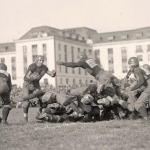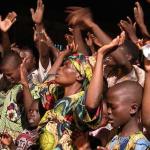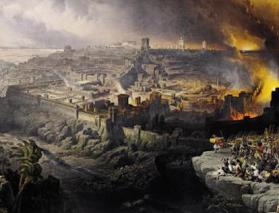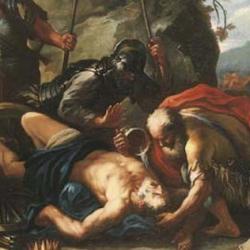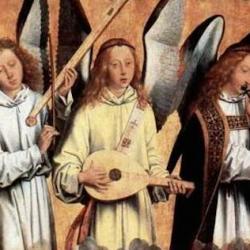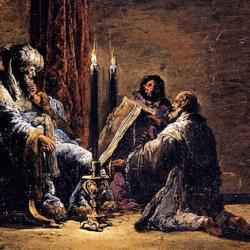In that seventh year, Jehoiada the priest organizes a covenant renewal that will restore the Davidic kingdom. He places the boy king Joash on the throne (2 Chronicles 23).
The covenant renewal is a double or even a triple covenant renewal.
The first covenant involves Jehoiada the priest and five captains of hundreds. They enter a covenant to carry out a restoration of the Davidic monarchy (v. 1). Then, in what may be a second covenant, the high priest and these five chiefs enter into a covenant with the king in the temple (v. 3). They commit themselves to put the king on the throne.
It’s significant that the whole thing is organized by a priest, and that he gathers Levites from all the cities of Judah to assist him (v. 2). Levites are at the center of the Chronicler’s vision of Israel. He’s telling the history of the Davidic kingdom, but the Davidic kingdom only is what it’s called to be, and does what it’s called to do, when the king is surrounded by Levitical priests who carry on the ministry of the temple.
Their presence highlights the fact that this restoration isn’t merely a political act. It’s an act of worship, a liturgical act.
During the coronation, Levites gather to protect the king, each with his “weapons” in his hand (v. 7). Specifically, they are equipped with spears and shields. Jehoiada wants them to be like Phinehas, who speared a fornicating couple that was defiling the holy camp (Number 25). Jehoiada wants to restore the Davidic kingdom, and he knows that it will be a failure if any unauthorized person enters the house (v. 7). The restoration won’t be successful if they restore Yahweh’s prince but defile Yahweh’s house.
Levites have killed before, and not just Phinehas. Levites were granted priestly status because of their zeal in slaughtering idolaters at the foot of mount Sinai, in the incident of the golden calf. They “filled their hands” with swords, and so Yahweh “filled their hands” to carry out priestly duties. Here again, they are called to “fill their hands” with spears in order to kill.
They will use those weapons, but there’s another layer here. The Hebrew word for “weapons” (keliy) also means “temple vessel” and “musical instrument.” And the Levites use these musical weapons too: Priests trumpet, people rejoice, and the people with their musical weapons lead the praise (v. 13).
Joash is protected by the Levitical bodyguard. Joash also ascends to his throne on the praises of the Levites.
Armed Levites form a ring around the king, on the right and left side of the temple, by the altar and the house. The king is surrounded by Levites as Yahweh’s own throne is surrounded by Levites.
Jehoiada places a crown on his head. This is not the normal word for a king’s crown. It’s instead used of the crown of the high priest. The word is nezer, which reminds us of the separated, dedicated Nazirite holy warriors.
It also looks ahead to prophesies about a “netzer,” a branch, that would spring from the stump of Jesse. That is what Joash is: Fresh growth from the roots of Jesse, the unexpected green sprouting from the dry, dead ground of the house of David.
All this takes place in the midst of an assembly, a qahal, like the assembly to bring the ark into Jerusalem. There too you had Levites gathered with musical instruments, shouts and songs of praise, trumpets blowing. The ark is the ark of the “testimony,” and Joash is given something called “the testimony” along with his crown.
Joash’s coronation isn’t simply a restoration of a fallen dynasty. It’s a restoration of Yahweh’s kingship in Judah, with the human ark-throne, Joash, ascending to the chosen city, ascending to the throne of David, which is Yahweh’s throne. Joash is crowned to be the bearer of the Lord’s presence. He becomes a living ark, the throne of the Lord in Judah.

